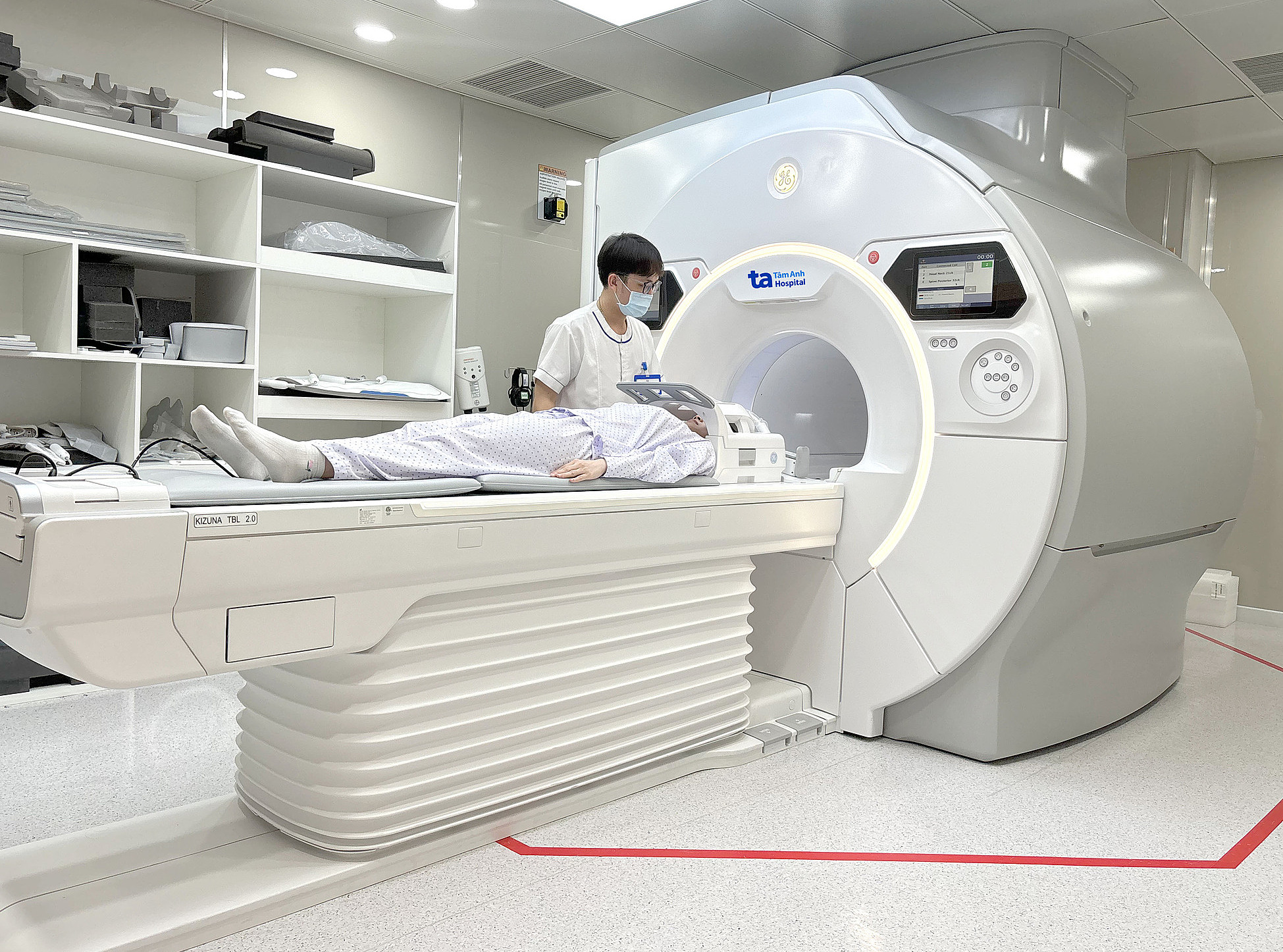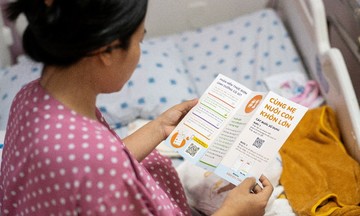"Children often suffer from acute pancreatitis, but it rarely progresses to a chronic condition," explained Dr. Phan Thi Tuong Van, a pediatrician at Tam Anh General Clinic, District 7, Ho Chi Minh City. Ruling out common causes such as trauma or gallstones in children, she pointed to genetic factors or congenital anomalies as the two main causes of the disease. An MRI scan of Tram showed no structural changes or stones in the pancreas, but a blood test revealed a mutation in the SPINK1 gene. This gene mutation can reduce or eliminate the function of the SPINK1 protein produced in the pancreas, increasing the risk of inflammation.
Two months earlier, Tram experienced severe abdominal pain, bloating, and vomiting green and yellow fluid. She was rushed to a hospital and diagnosed with acute pancreatitis. She then experienced two more episodes of severe abdominal pain. A check-up at Tam Anh General Clinic, District 7, revealed chronic pancreatitis.
Doctors treated Tram with medication combined with a low-fat diet, divided into small, frequent meals, to avoid overeating in one sitting, which can stimulate the pancreas and trigger acute inflammation. Currently, Tram's health is stable, but she needs to maintain a healthy lifestyle combined with pain medication and regular check-ups to monitor her pancreatic enzyme levels and response to medication. If she experiences severe vomiting and abdominal pain, signs of an acute flare-up, she needs to be hospitalized promptly to avoid complications like sepsis. In cases of severe pain resistant to medication, doctors may recommend a celiac plexus block to numb the nerves transmitting pain signals from the pancreas.
 |
The patient undergoes an MRI at Tam Anh General Clinic, District 7. Illustrative photo: Provided by the hospital |
The pancreas, located behind the stomach, produces digestive enzymes for the small intestine and hormones like insulin and glucagon to regulate blood sugar. In pancreatitis, these enzymes are activated prematurely within the pancreas, damaging the pancreatic tissue, causing inflammation, swelling, and pain.
Pancreatitis is mainly divided into two types. Acute pancreatitis occurs suddenly and typically lasts for a few days, ranging from mild to severe. Symptoms include intense upper abdominal pain, which can start abruptly and radiate to the back. The pain often worsens after eating. Other symptoms include nausea and vomiting, fever, and a rapid heartbeat. Most patients with acute pancreatitis fully recover with proper treatment.
Chronic pancreatitis is long-term inflammation that recurs over many years, causing permanent damage to the pancreas, leading to impaired function and serious problems like malnutrition and diabetes. Chronic pancreatitis can spontaneously flare into acute episodes without any significant triggers. Frequent acute pancreatitis attacks can destroy pancreatic tissue, resulting in irreversible damage. Dr. Van noted that about 50% of recurrent pancreatitis cases are linked to genetic factors; the rest are due to structural abnormalities in pancreatic tissue, gallstones, or medication.
Both acute and chronic pancreatitis can impair nutrient absorption in children, impacting their growth, physical development, and potentially leading to diabetes at a young age. Children with chronic pancreatitis, especially those with a genetic predisposition due to gene mutations, have a much higher risk of pancreatic cancer in adulthood and require regular screening. The disease can also affect a child's mental well-being and requires family support and care.
Dinh Lam
*The patient's name has been changed
| Readers can submit questions about children's health here for doctors to answer. |












